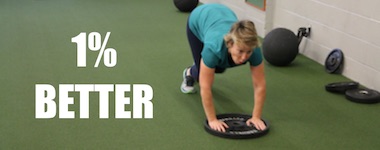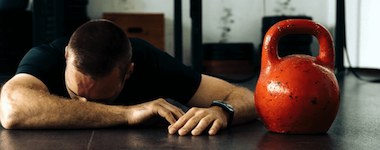This article is for all runners out there and especially the ones getting ready for the Mini Marathon or Geist Half Marathon!
I remember so well being on the race track and about mile 8 or 9, stabbing pain radiated from my knee that was almost debilitating. I honestly was unsure if I would finish the race. I did make it through the race but my pace was slowed significantly.
I had been running in the middle of the race track and it was enough of an incline to tighten my IT band which was causing the excruciating pain in my knee. I was sore for several days after the race. I gave it a week and then went out for a run and BAM the pain was back. So I walked in discouragement. Tried to start running again, same pain. This went on for a few weeks of trying to rest, do some light stretching, but every time I went to run back was the pain.
I had already signed up for the Monumental Full Marathon and I was starting to question whether I would be able to complete a Full Marathon.
But little did I know that I was going to stumble upon some key techniques that I had been missing from my workouts. This has been life changing for me and I encourage you to read this article. If you are dealing with any sort of pain from running please give us a call or request a Free Consultation. We can help and you will be surprised at how simple the techniques can be!
This article was written by Sharon Sauer, CMTPT who has been a long-time mentor of Tomo.
It’s that time of year when you might start preparing for your jogging or running season! The knee joint should stick out in your mind as a key area to prepare in order to enjoy a full and injury free season. Nearly half of all overuse injuries occur in the knee, so it is crucial to care for the muscles that affect this important joint for runners.
In this issue, we will focus on the Quadriceps Femoris, a group of four critical muscles Dr. Janet Travell referred to as the “Four-Faced Trouble Maker”.
Trigger points in the Quadriceps cause weakness, pain, and other problems in the knee, including:
- Pain in the Kneecap (Patella)”Stuck Patella”
- Kneecap Tracking Problems (“Runner’s Knee”)
- Buckling Knee when Stepping or Running
- Pain on the Inside and Outside of the Knee
- Pain in the Thigh (Front, Inside and Outside)
Perform the following tests and self-care tips to identify and correct possible trigger points in your Quadriceps and enjoy a safer, stronger running season!
*The information in this article is not intended to diagnose or treat any medical condition and does not substitute for a thorough evaluation by a medical professional. Please consult your physician to determine whether these self-care tips are appropriate for you.
Quick Self-Tests to Tell if You have Trigger Points in Your Quadriceps Femoris:
Follow the instructions below to test whether you have myofascial trigger points in the “Four-Faced Trouble Maker”.
Heel to Buttocks Test


While lying on your stomach, grasp the top of the foot or ankle with the same side hand and pull the heel straight toward the buttocks. A Passing result is when you can bring your heel to touch the buttocks comfortably. A Failing result occurs when the heel remains further away from the buttocks (as shown). The further the heel is from the buttocks the greater the amount of myofascial dysfunction and trigger points present.
Lateral and Medial Quads


To further isolate the lateral quads (Vastus Lateralis), pull the heel toward the opposite buttock. To isolate the medial quads (Vastus Medialis) pull the heel toward the outside of the buttock, as shown. Again, in both lateral and medial tests, a Passing result is being able to touch the heel to the buttocks.
3-Step Simple Self-Care Remedies
Here are simple self-care remedies for treating myofascial trigger points in your Quadriceps Femoris. Repeat 2-3 times per day and observe how your flexibility and pain can improve! Continue working daily on your Quadriceps until you pass or greatly improve your Self-Tests results.
Step 1: Warming Up with Moist Heat

To relax and warm up the fibers of the Quadriceps Femoris, take a warm bath or place on a Fomentek on top of the thigh for 10-15 minutes.
Step 2: Compression
To compress trigger points in the Quadriceps, position yourself and your self-care tool as shown:


Roll over the front, inside and outside of the thigh. When you find a tender spot, press into the muscle to pain tolerance (“good pain” – not pain that is sharp or makes you want to withdraw). Hold for 10 seconds while completing at least two full breaths in and out. Then continue searching for more tender spots until the entire Quadriceps muscle is covered.
Step 3: Stretching for the Quadriceps
Stretching after compression and especially before running can greatly improve the function of your Quadriceps and prevent injury to your knee. Using a counter top or sturdy chair back like a ballet bar for balance, pull your heel back toward your buttocks. First, pull the heel straight up toward the middle of the buttocks. Then bring the heel toward the opposite buttocks (it may help to use the opposite hand). Finally, bring the heel to the outside of the same buttocks. In each position, hold for 20 seconds and repeat 2 times.



Stay tuned for the next Article, this was part 1 of a 2 part series! Happy pain free running!


